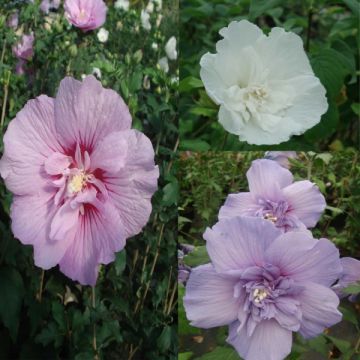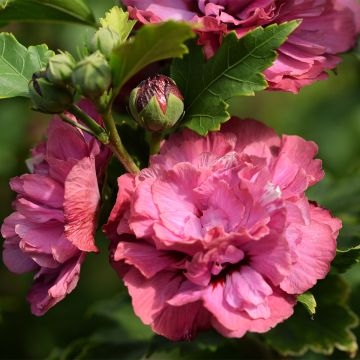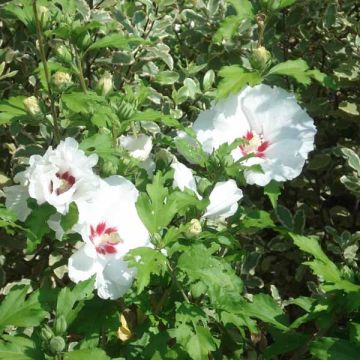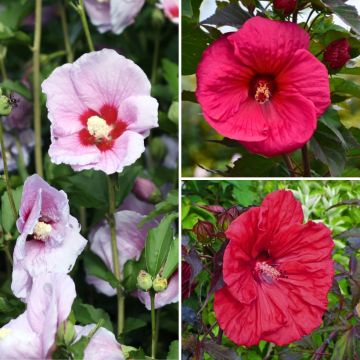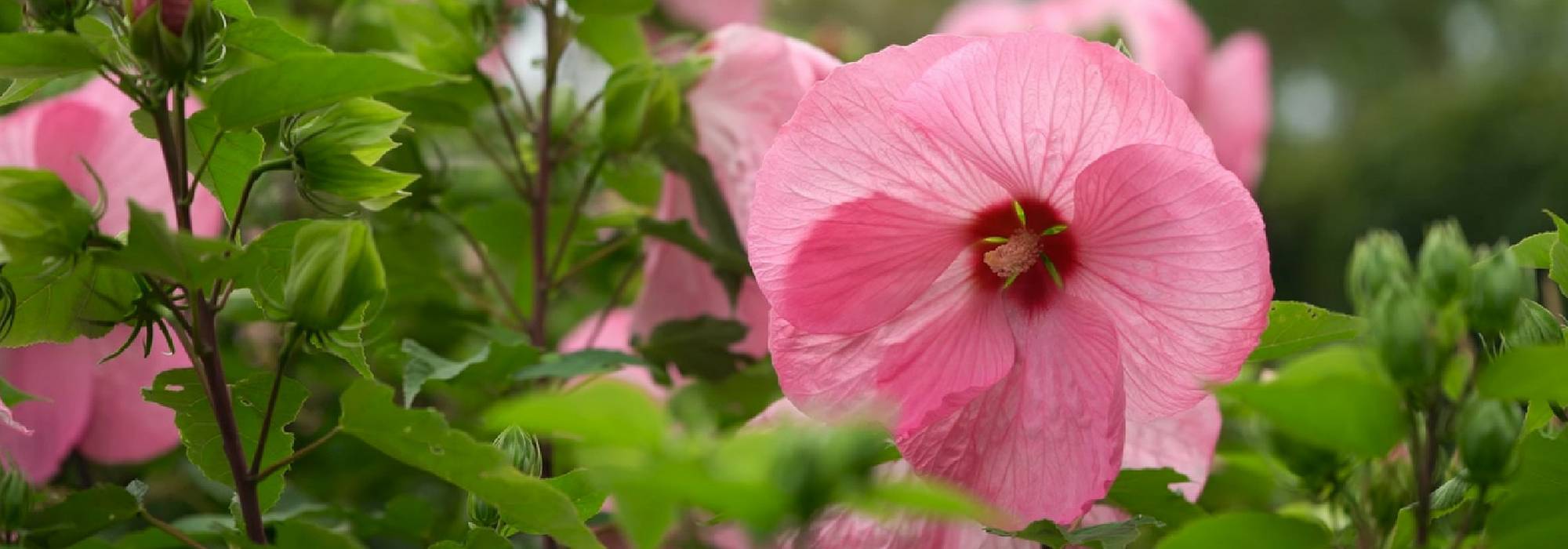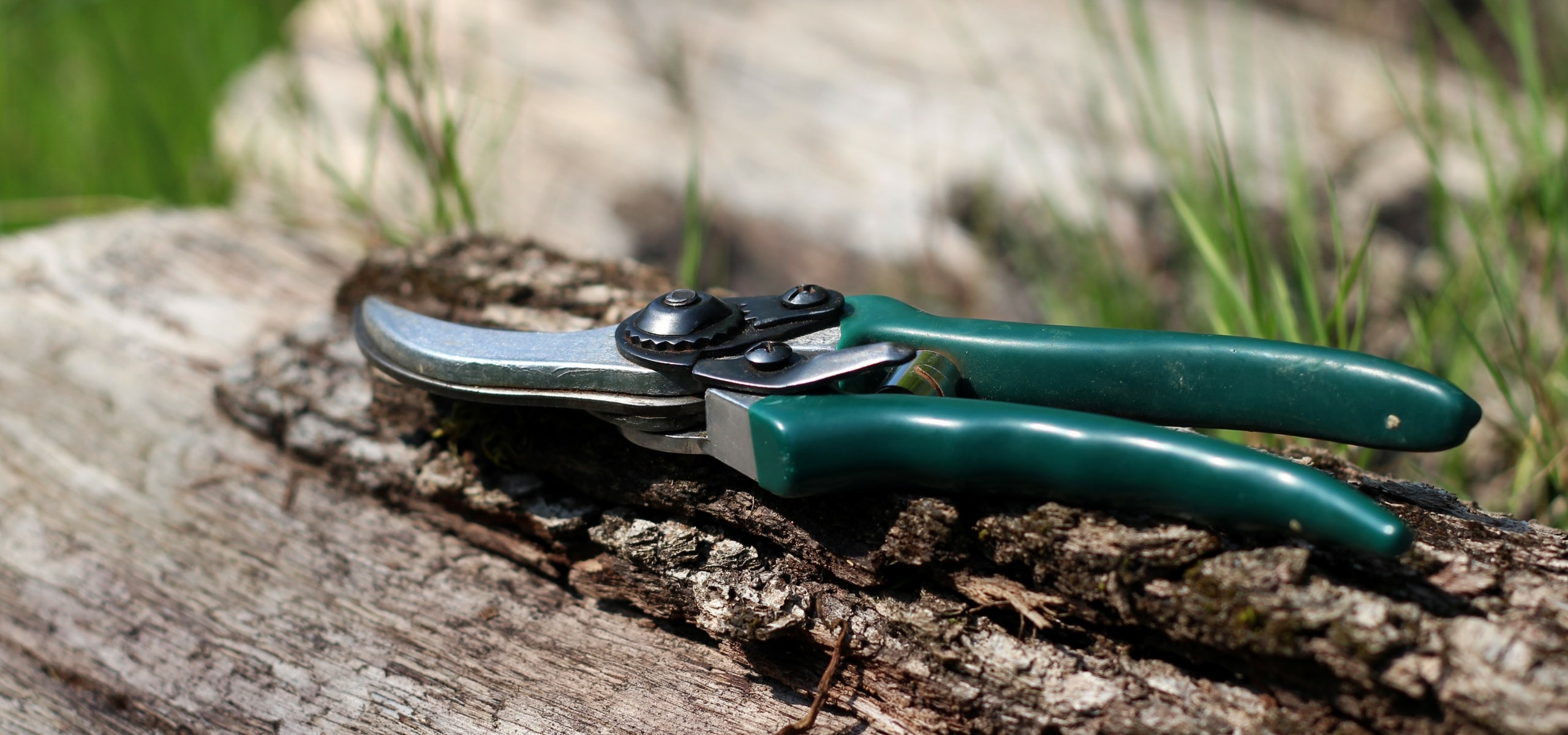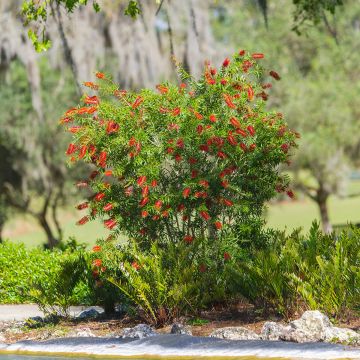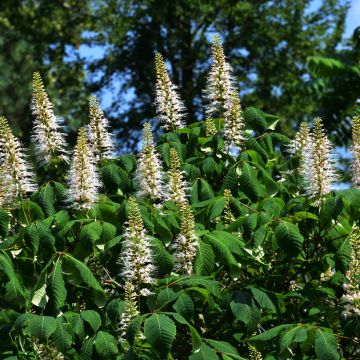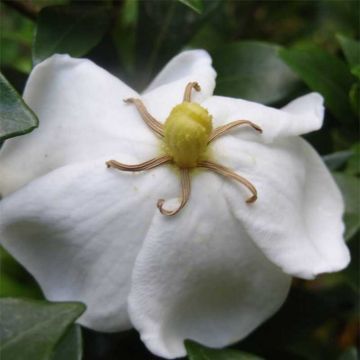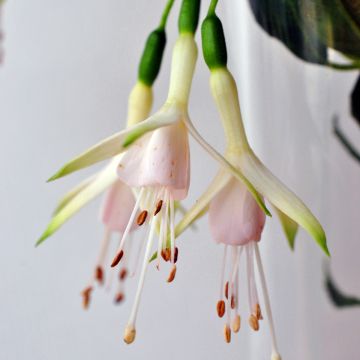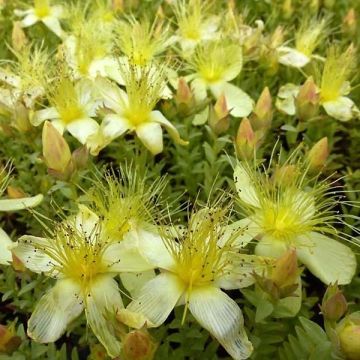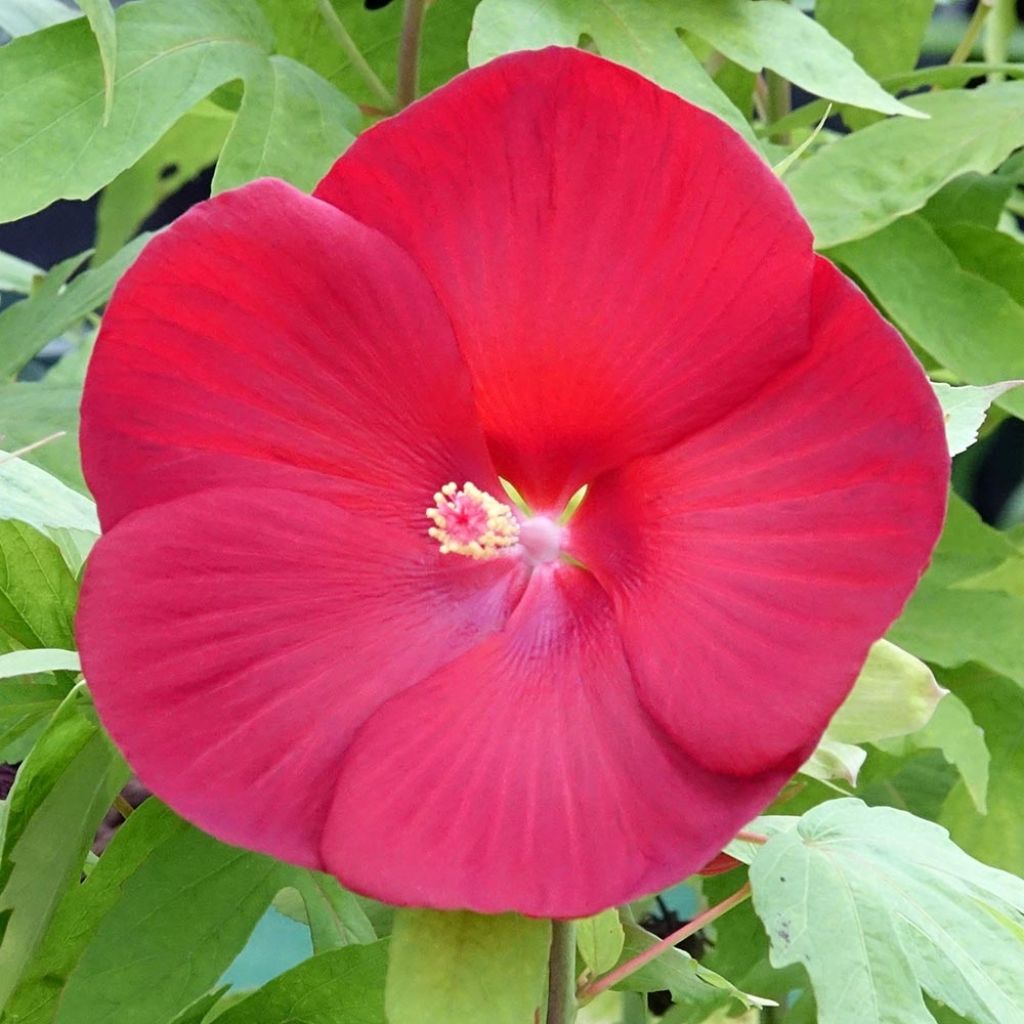

Hibiscus moscheutos Raijin® - Hibiscus des marais nain


Hibiscus moscheutos Raijin® - Hibiscus des marais nain


Hibiscus moscheutos Raijin® - Hibiscus des marais nain
Hibiscus moscheutos Raijin- Rose mallow
Hibiscus moscheutos Raijin® 'Akata88'
Swamp Rose Mallow, Eastern Rose Mallow, Crimsoneyed Rose Mallow, Marsh Hibiscus
Special offer!
Receive a €20 voucher for any order over €90 (excluding delivery costs, credit notes, and plastic-free options)!
1- Add your favorite plants to your cart.
2- Once you have reached €90, confirm your order (you can even choose the delivery date!).
3- As soon as your order is shipped, you will receive an email containing your voucher code, valid for 3 months (90 days).
Your voucher is unique and can only be used once, for any order with a minimum value of €20, excluding delivery costs.
Can be combined with other current offers, non-divisible and non-refundable.
Why not try an alternative variety in stock?
View all →This plant carries a 24 months recovery warranty
More information
We guarantee the quality of our plants for a full growing cycle, and will replace at our expense any plant that fails to recover under normal climatic and planting conditions.
Does this plant fit my garden?
Set up your Plantfit profile →
Description
This new Hibiscus moscheutos Raijin® 'AKATA88', with its compact habit and long-lasting summer flowering, is an excellent variety of marsh hibiscus for decorating terraces and balconies. This pretty perennial plant for waterlogged soils flowers until late summer, displaying its beautiful, slightly crumpled cup-shaped flowers in an extremely bright, magnificent pure red. It should be planted in handsome containers kept very moist throughout the growing season. Also very decorative at the edge of a pond.
Hibiscus moscheutos, also known as Hibiscus palustris, is a herbaceous plant with a woody trunk from the mallow family, a cousin of mallows and hollyhocks. It is native to the marshes of the southern United States, where it sometimes reaches 2 m in height. In our climate, this swamp rose mallow sends up straight, upright stems each year, quite late in spring, forming a spreading bush. Horticulturists have discovered this astonishing botanical species and, through cross-breeding with other species, have obtained many less bulky and very interesting cultivars, show flowers with varied colours, and increased floribundity.
The hybrid variety 'Raijin' was recently selected in Japan by Yukio Kurabayashi for its particularly branching, very compact habit. It inherited the remarkable scarlet red colour of its flowering from its other parent, Hibiscus coccineus. The plant forms a bushy, well-branched clump that will quickly reach about 50 cm in all directions in one season. After 10 years, in a very large pot, it may reach 1 m in all directions. This cultivar produces many single, 12 to 15 cm wide flowers with slightly crumpled petals. The pure red flower is marked with dark red in its centre and has a column of white stamens and pistils. The flowers are short-lived, but are constantly renewed from July to September-October if one prunes the plant in August. The stems are green and downy. The abundant leaves are divided into 3 to 5 spade-shaped, fresh green lobes, giving the foliage a very ornamental appearance throughout the growing period.
Marsh Hibiscus are spectacular plants that cannot be ignored: one either hates their huge flowers because they are sometimes difficult to integrate into a natural setting, or one adores them, for the same reasons that will see them adopted in a contemporary-style garden, or in a small exotic scene cleverly organised around a small pond on the terrace. This superb plant may suffer further north and in the mountains, even though its hardiness can reach -15°C when the crown is dry in winter.
All Marsh Hibiscus give another dimension to waterlogged beds, or to the bank of a pond, accompanied by cannas, white arum lily or Papyrus. The 'Raijin' selection is very bushy and covered in fewer oversized flowers. It will be adored by those who love flowers but do not have a garden, as they can bring a small tropical touch to the balcony.
Hibiscus moscheutos Raijin- Rose mallow in pictures


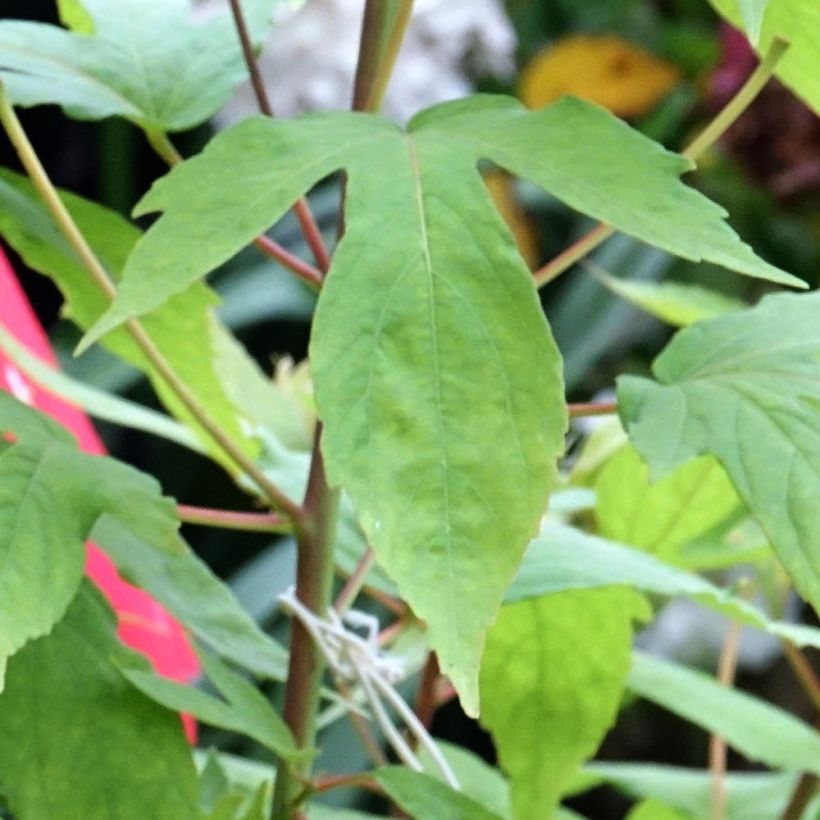

Plant habit
Flowering
Foliage
Botanical data
Hibiscus
moscheutos
Raijin® 'Akata88'
Malvaceae
Swamp Rose Mallow, Eastern Rose Mallow, Crimsoneyed Rose Mallow, Marsh Hibiscus
Cultivar or hybrid
Planting and care
Hibiscus x moscheutos 'Raijin' is hardy (down to -15°C) but still requires winter protection in very cold climates. When the crown is protected from excessive moisture in winter, the plant withstands cold better.
For planting in beds: dig a hole 40 cm in all directions, lined with an impermeable membrane and filled with a mixture of good garden soil and fertiliser. Maintain in a permanently marshy, moist state during the growth and flowering period. Once the leaves yellow in October, simply keep the soil damp. Prune the stems to 5 cm from the soil in late autumn and protect the crown. Growth restarts late in spring, in April-May, depending on the climate.
Prune lightly in August to maintain a bushy shape and prolong flowering in this 'Raijin' selection.
It is easy to cultivate in pots in rich compost kept constantly moist from April to October. Apply regular fertiliser for flowering plants (geranium feed, for example). In winter, the pot can be left to winter rains, which should be enough to ensure the plant's survival. In case of severe cold, you can shelter it in an unheated room, even in darkness.
Planting period
Intended location
Care
Planting & care advice
This item has not been reviewed yet - be the first to leave a review about it.
Similar products
Haven't found what you were looking for?
Hardiness is the lowest winter temperature a plant can endure without suffering serious damage or even dying. However, hardiness is affected by location (a sheltered area, such as a patio), protection (winter cover) and soil type (hardiness is improved by well-drained soil).

Photo Sharing Terms & Conditions
In order to encourage gardeners to interact and share their experiences, Promesse de fleurs offers various media enabling content to be uploaded onto its Site - in particular via the ‘Photo sharing’ module.
The User agrees to refrain from:
- Posting any content that is illegal, prejudicial, insulting, racist, inciteful to hatred, revisionist, contrary to public decency, that infringes on privacy or on the privacy rights of third parties, in particular the publicity rights of persons and goods, intellectual property rights, or the right to privacy.
- Submitting content on behalf of a third party;
- Impersonate the identity of a third party and/or publish any personal information about a third party;
In general, the User undertakes to refrain from any unethical behaviour.
All Content (in particular text, comments, files, images, photos, videos, creative works, etc.), which may be subject to property or intellectual property rights, image or other private rights, shall remain the property of the User, subject to the limited rights granted by the terms of the licence granted by Promesse de fleurs as stated below. Users are at liberty to publish or not to publish such Content on the Site, notably via the ‘Photo Sharing’ facility, and accept that this Content shall be made public and freely accessible, notably on the Internet.
Users further acknowledge, undertake to have ,and guarantee that they hold all necessary rights and permissions to publish such material on the Site, in particular with regard to the legislation in force pertaining to any privacy, property, intellectual property, image, or contractual rights, or rights of any other nature. By publishing such Content on the Site, Users acknowledge accepting full liability as publishers of the Content within the meaning of the law, and grant Promesse de fleurs, free of charge, an inclusive, worldwide licence for the said Content for the entire duration of its publication, including all reproduction, representation, up/downloading, displaying, performing, transmission, and storage rights.
Users also grant permission for their name to be linked to the Content and accept that this link may not always be made available.
By engaging in posting material, Users consent to their Content becoming automatically accessible on the Internet, in particular on other sites and/or blogs and/or web pages of the Promesse de fleurs site, including in particular social pages and the Promesse de fleurs catalogue.
Users may secure the removal of entrusted content free of charge by issuing a simple request via our contact form.
The flowering period indicated on our website applies to countries and regions located in USDA zone 8 (France, the United Kingdom, Ireland, the Netherlands, etc.)
It will vary according to where you live:
- In zones 9 to 10 (Italy, Spain, Greece, etc.), flowering will occur about 2 to 4 weeks earlier.
- In zones 6 to 7 (Germany, Poland, Slovenia, and lower mountainous regions), flowering will be delayed by 2 to 3 weeks.
- In zone 5 (Central Europe, Scandinavia), blooming will be delayed by 3 to 5 weeks.
In temperate climates, pruning of spring-flowering shrubs (forsythia, spireas, etc.) should be done just after flowering.
Pruning of summer-flowering shrubs (Indian Lilac, Perovskia, etc.) can be done in winter or spring.
In cold regions as well as with frost-sensitive plants, avoid pruning too early when severe frosts may still occur.
The planting period indicated on our website applies to countries and regions located in USDA zone 8 (France, United Kingdom, Ireland, Netherlands).
It will vary according to where you live:
- In Mediterranean zones (Marseille, Madrid, Milan, etc.), autumn and winter are the best planting periods.
- In continental zones (Strasbourg, Munich, Vienna, etc.), delay planting by 2 to 3 weeks in spring and bring it forward by 2 to 4 weeks in autumn.
- In mountainous regions (the Alps, Pyrenees, Carpathians, etc.), it is best to plant in late spring (May-June) or late summer (August-September).
The harvesting period indicated on our website applies to countries and regions in USDA zone 8 (France, England, Ireland, the Netherlands).
In colder areas (Scandinavia, Poland, Austria...) fruit and vegetable harvests are likely to be delayed by 3-4 weeks.
In warmer areas (Italy, Spain, Greece, etc.), harvesting will probably take place earlier, depending on weather conditions.
The sowing periods indicated on our website apply to countries and regions within USDA Zone 8 (France, UK, Ireland, Netherlands).
In colder areas (Scandinavia, Poland, Austria...), delay any outdoor sowing by 3-4 weeks, or sow under glass.
In warmer climes (Italy, Spain, Greece, etc.), bring outdoor sowing forward by a few weeks.






























